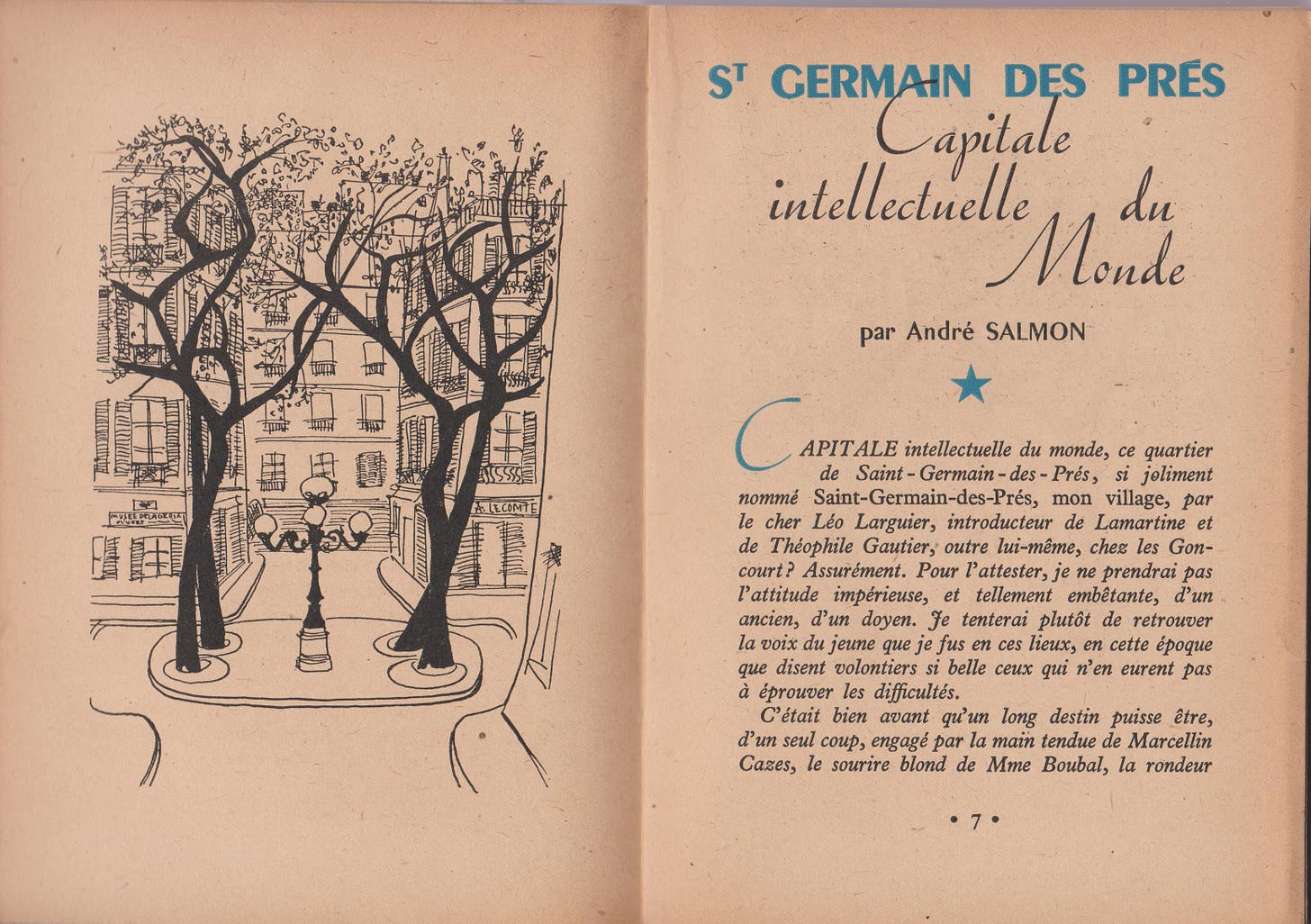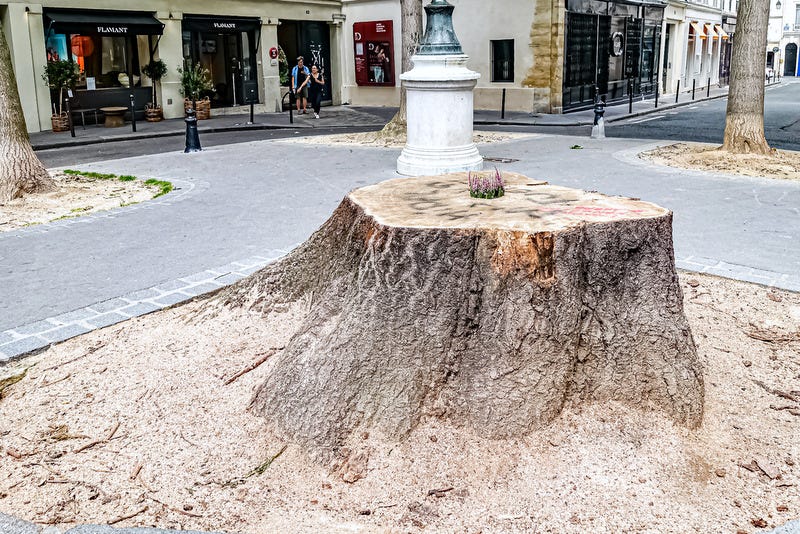I was brought up in rural Australia, a landscape so sparsely wooded that locals saw nothing funny in the old joke of a stranger passing through who, noticing an unusual variety of eucalypt, enquired “What is that?”, to be told, “Why, that’s a tree, son.”
Were I a tree-hugger, France would not lack love objects. And no doubt Paris harbours a few dendrophiles; people sexually aroused by trees. (In A Melon for Ecstasy, by British humourists John Fortune and John Wells, its main character prowls the groves of London, armed with a device for boring holes of an appropriate dimension, and a tube of antiseptic cream, to deal with splinters. The title comes from an Arabic and Turkish proverb, "A woman for duty / A boy for pleasure / But a melon for ecstasy.")
But I digress…though not too far. Quite often, I visit one of the prettiest of St Germain’s squares, Place de Fürstemberg, sometimes called “the most romantic spot in Paris.” The frontispiece by Marianne Peretti to the 1950 Almanach de St Germain des Prés captures the sinuous, almost erotic character of the quartet of paulowias which dominate it. Or did so until recently, at least.
Many have commented on the symbolism of three slim feminine-appearing trees appearing to cower from the larger and aggressively fourth, clearly male. “The other night, when I passed by,” wrote Henry Miller in Tropic of Cancer, “it was deserted, bleak, spectral. In the middle of the square four black trees that have not begun to blossom. Intellectual trees, nourished by the paving stones. Like T.S. Eliot’s verse. Here, by God, if Marie Laurencin ever brought her Lesbians out into the open, this would be the place for them to commune. Tres lesbienne ici. Sterile, hybrid, dry.” (You will recall that painter Marie Laurencin, while an intimate of Picasso and Apollinaire, also belonged to the Sapphic circle of hostess Natalie Clifford Barney. A critic called the wan women of her pastel-tinted portraits “balletic wraiths” and “sidesaddle Amazons” who depict the “queer femme with a Gallic twist.”)
Imagine my shock, then, when passing through the square this week, to find the largest tree gone, and a weedy sapling in its place.
According to the city council, the tree had become too dangerous, its roots damaged by rats. But the surreptitious way the work took place – it began last August, when most of those who might protest were out of town – arouses suspicion. Were locals residents resentful of its shade, or its popularity with tourists, film crews and fashion magazines? The square – all right; not technically a square but a rond point or roundabout - appears in Martin Scorsese’s The Age of Innocence, Vincente Minnelli’s Gigi, the series Emily in Paris, and provides the entrance to the Ministry of Magical Affairs in the 2018 film Fantastic Beasts: The Crimes of Grindelwald. Vogue models are also frequently to be encountered draped over the central light fitting.
Our present mayor, Madame Hidalgo, the Wicked Witch of the Hotel de Ville, is hell bent on turning some of our noblest thoroughfares and public spaces, including Place de l’Opéra and the Champs-Élyseés, into “urban forests” or wooded strolls, a policy favoured by local shops and cafes, who make no money from road traffic but hunger for pedestrians. A tree is a tree is a tree, as Gertrude Stein might have said. Not to Madame H, however, who, despite her enthusiasm for forests, clearly believes that some trees are more equal than others.








Devastating what she is doing in Paris under the guise of "green" An avenue of beautiful trees were chopped out on St Kilda Road to make way for an unnecessary underground rail. Also at exorbitant cost -11b. Over 95 plane trees and elm, which were magnificent and over 100 years old.